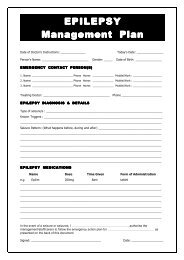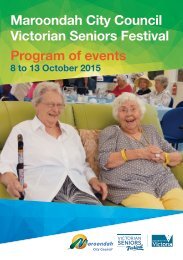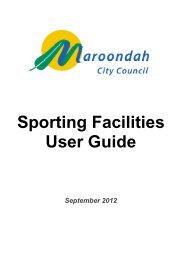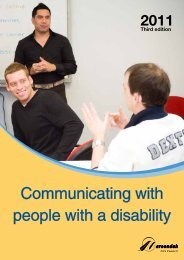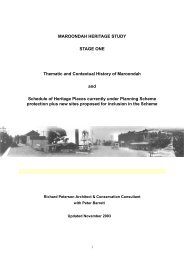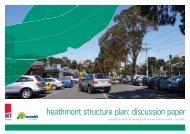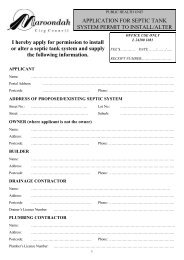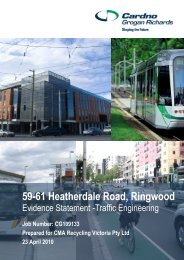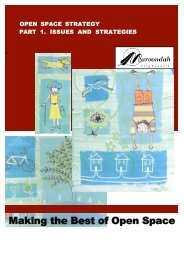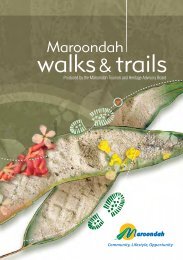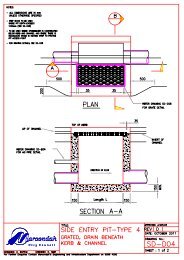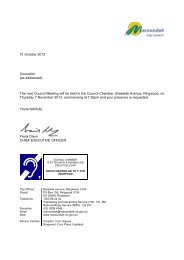MAROONDAH INTEGRATED TRANSPORT STRATEGY
Maroondah Integrated Transport Strategy - Maroondah City Council
Maroondah Integrated Transport Strategy - Maroondah City Council
You also want an ePaper? Increase the reach of your titles
YUMPU automatically turns print PDFs into web optimized ePapers that Google loves.
4 Demand for TransportTravel demand arises from people’s desire to undertake activities such as working,attending school, shopping or playing sport. The locations of residence and activities,the means available to travel between the locations and the characteristics of travellersdetermine the transport choices people make.4.1 Transport and Land UseThere are interactions between the demand for transport and land uses (residences andactivities), with transport supply having effects on development patterns and viceversa. There is much debate about how strong the relationships are in each directionand what their effect is on the use of public transport in particular.Current interest in activity centres (or more concentrated and mixed development insuburbs) is one mechanism being explored in an attempt to change activities as ameans of changing travel demands/patterns (Melbourne 2030). Overseas studies haveshown that there is a relationship between urban form and travel patterns and therelationship appears to be stronger for non-work trips than work trips. Workundertaken in Sydney appears to confirm these conclusions, showing that higher publictransport use is associated with (Battelino 1997):• Lower rates of trip making for non-work trips;• Mixed development;• High population density;• Grid street pattern (which is more easily served by public transport);• High income and low car ownership (because the higher use areas tend to be inthe inner suburbs); and• Proximity to rail stations (although the analysis only included train services).Changes in land uses will take a relatively long time to achieve, so arguably will notaffect transport patterns to any great extent in the short to medium term. However,there may be urban design features, which could be changed fairly easily to makepublic transport, cycling and walking more attractive in the short term.4.2 Transport ModesThe different means of transport have inherent characteristics, which give themadvantages over other modes in meeting some transport demands. For example:• Public transport, particularly rail, can move large numbers of people to acommon destination, typically the CBD• Buses have the potential to provide more flexible services than rail or trambecause routes and the size of vehicle can be altered with relative ease• Walking is restricted to short trips due to its speed relative to mechanical modes• Cycling can be for commuting, recreation or school travel. Restrictions on loadsthat can be carried but time times for short to medium distances in the urbanenvironment can be comparative to the motor car20



